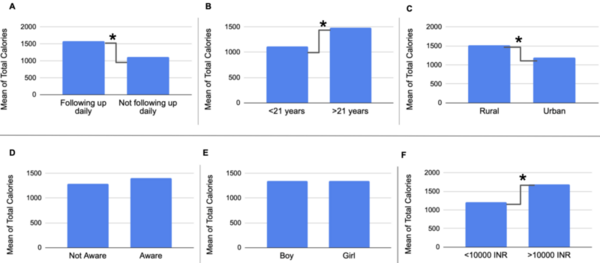Socio-economic factor impact on malnutrition in South Indian government school children
(1) The International School Bangalore, Bangalore, Karnataka, India, (2) Department of Management Studies, Indian Institute of Sciences, Bangalore, Karnataka, India
https://doi.org/10.59720/22-247
India finds itself in a vulnerable position with the highest prevalence of malnutrition in the world. In this study, we investigated the various socio-economic factors affecting the amount and variety of calories consumed by children studying in government schools in South India. After a pilot study, we conducted an online survey of 214 children (boys=95, girls=119) between the ages of 13–16 years in three states of India. Overall, we found that 63% of the children had a caloric intake of less than 1,500 calories per day, which is lower than World Health Organization guidelines of 2,100 calories. Parental education, parental income, parental diet reminders, and geographical area were significant factors influencing the total calorie intake among the participants. Cohen's D test revealed a medium effect size for parental income and a large effect size for parental diet reminders. Chi-square test confirmed that geographical location, income, and parental education were not correlated with one another, affecting the total calorie consumption independently. Parental reminders and income had a significant influence across all components of total calories including carbohydrates, proteins, fats, and vitamins/minerals. To alleviate malnutrition, in addition to alleviating the income challenges, other initiatives include improving parental education and parental awareness of a balanced diet, such that parents can enable healthy diet habits among children.
This article has been tagged with: